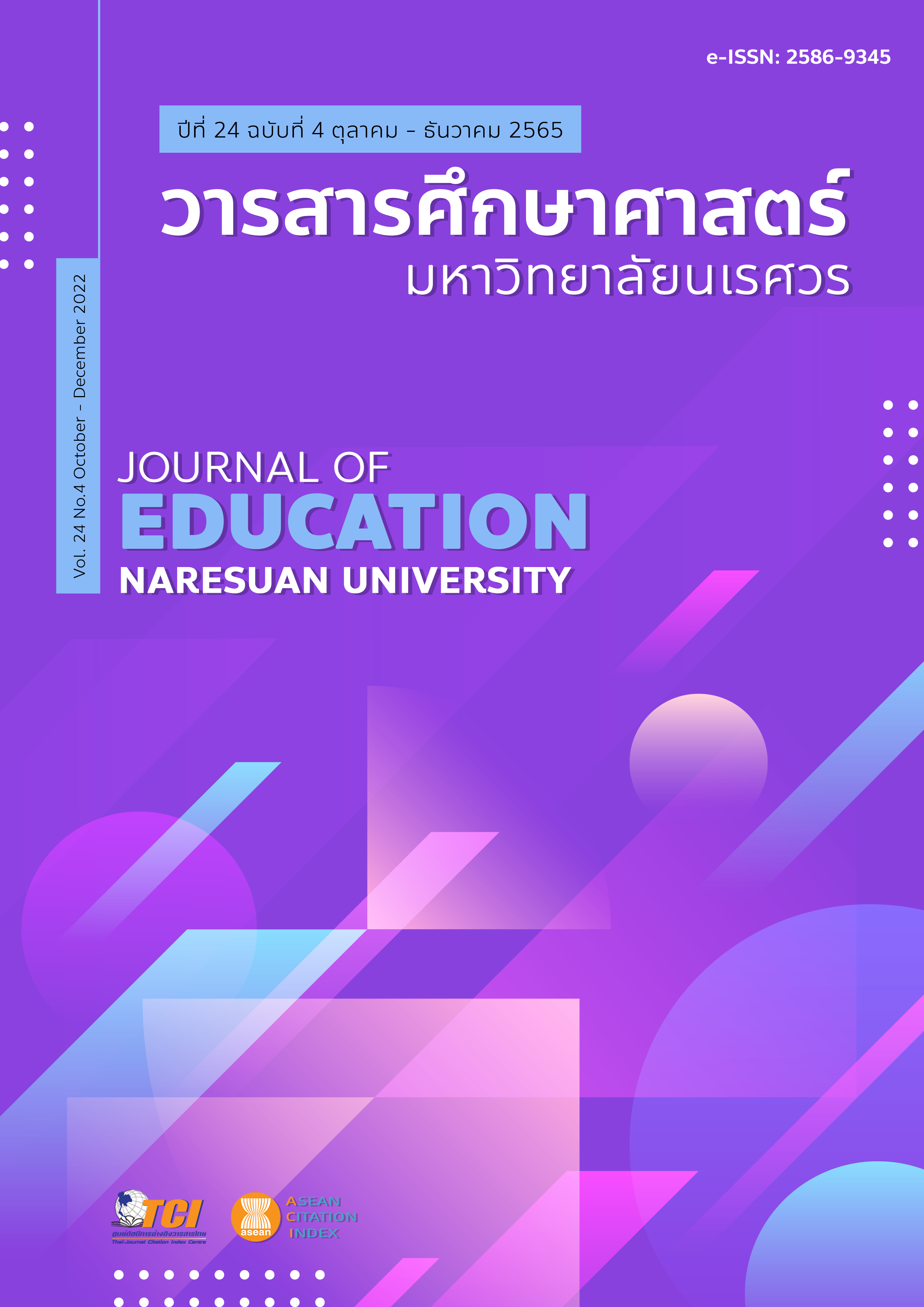DEVELOPING THE CREATIVE WRITING ABILITIES AND RESPONSIBILITIES BY USING BRAINSTORMING TECHNIQUES AND MIND MAPPING FOR GRADE 2 STUDENTS การพัฒนาความสามารถในการเขียนเชิงสร้างสรรค์และความรับผิดชอบโดยใช้เทคนิคการระดมสมองและแผนผังความคิด สำหรับนักเรียนชั้นประถมศึกษาปีที่ 2
Main Article Content
Abstract
The purposes of this research were 1) to study students’ creative writing abilities by using brainstorming techniques and mind mapping, and 2) to study the responsibilities of students by using brainstorming techniques and mind mapping. The sample group used in the research was 20 grade 2 students of Tessaban 1 (Bansaenmueangmoon) School, Mueang District, Lampang Province. The sample group was chosen by cluster random sampling. The duration of the experiment was 20 hours. The research tools used in this research were lesson plans, creative writing ability test, and students’ responsibility assessment form. Data were analyzed by means, standard deviations, and Wilcoxon signed rank test. The results of the research found that: 1) Creative writing ability of students after learning by using brainstorming techniques and mind mapping were higher than prior to learning at the .01 level of significance. 2) Students had a high level of responsibility during learning.
Article Details

This work is licensed under a Creative Commons Attribution-NonCommercial-NoDerivatives 4.0 International License.
The owner of the article does not copy or violate any of its copyright. If any copyright infringement occurs or prosecution, in any case, the Editorial Board is not involved in all the rights to the owner of the article to be performed.
References
Brain Friendly Academy. (2019). Benefits of mind mapping. Retrieved January 14, 2020, from http://www.brainfriendlyacademy.com/main/
Bureau of Academic Affairs and Education Standards Office of the Basic Education Commission. (2010). A study of the follow-up results of Thai language learning management practices that are consistent with brain development (BBL: Brain – based Learning) Primary education in schools, strong early childhood center. Bangkok: The Agricultural Cooperative Federation of Thailand. Limited. [in Thai]
Chivaphan, A. (2018). Creative writing activities in elementary school. Bangkok: Chulalongkorn University Press. [in Thai]
Khammani, T. (2018). Science teaching: Knowledge to effective of the learning process. Bangkok: Chulalongkorn University Press. [in Thai]
Kommoonkaew, S. (2012). Use of mind mapping and group discussion to enhance English reading and oral presentation abilities among mathayomsuksa 5 students (Master thesis). Chiang Mai: Chiang Mai University. [in Thai]
Ministry of Education Thailand. (2008). Basic Education Core Curriculum B.E. 2551 (A.D. 2008). Bangkok: The Agricultural Cooperative Federation of Thailand. [in Thai]
Muanreakham, R. (2009). Using group process activities for development of responsibility of mathayomsuksa 2 students at Ban Bokaew School, Samoeng District, Chiang Mai Province (Independent Study). Chiang Mai: Chiang Mai University. [in Thai]
Ounmadee, C. (2007). Effect of using brainstorming and mind mapping techniques on essay writing of matayomsuksa 1 students (Master thesis). Udon thani Udon thani Rajabhat University. [in Thai]
Salaeh, S. (2018). Effect of flipped classroom approach with T5 paper model in stoichiometry on success in task, learning achievement, academic responsibility and satisfaction of the grade 10 students, Benjamarachutit School, Pattani (Master thesis). Pattani: Prince of Songkla University Pattani Campus. [in Thai]
Trairut, N. (2010). Effects of e-learning using brainstorming and mind mapping techniques on creative writing abilities of undergraduate students with different personalities (Master thesis). Bangkok: Chulalongkorn University. [in Thai]
Vass, E. (2002). Friendship and collaborative creative writing in the primary classroom. Journal of Computer Assisted Learning, 18(1), 102-110. https://doi.org/10.1046/j.0266-4909.2001.00216.x


